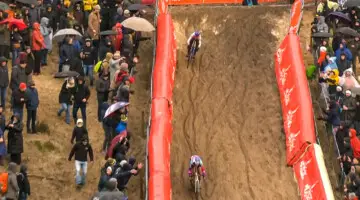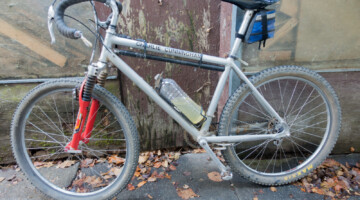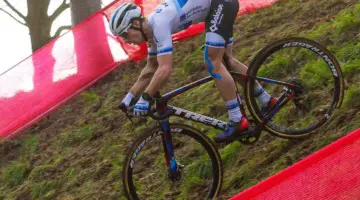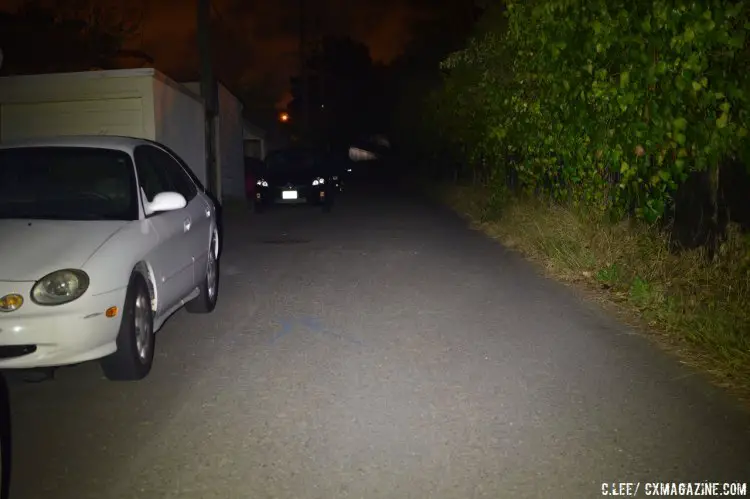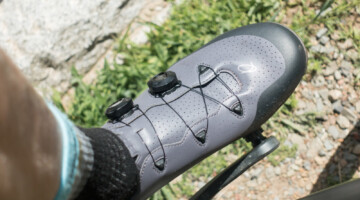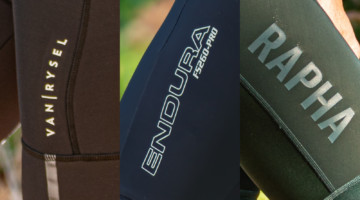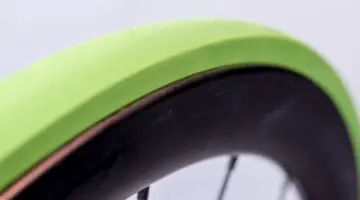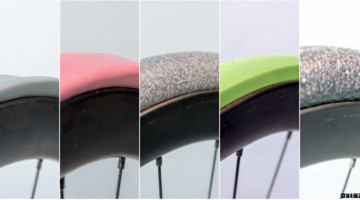We’re heading into the dog days of summer, meaning cyclocross is only a couple of months away and light will be waning. We have written plenty about night riding techniques and tips for night time practices. Cycling lights have come a long way, making night riding safer and more comfortable, enough so that training in the dark is a real option. Handlebar mounted lights create nice shadows allowing detection of ground texture, identifying holes, rocks or roots more effectively. Helmet mounted lights put the light where you are looking, so diving into corners, and negotiating tight trails is made easier. Ideally, both in conjunction is the best, and you can double you light output as the same time.
NiteRider has been in the sport light business for a long time, beginning 25 years ago with the development of a halogen light for surfing at night that quickly evolved into its application for night mountain biking.
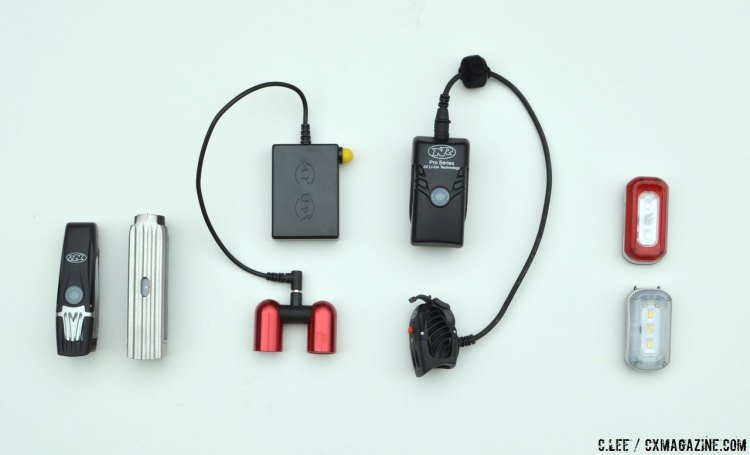 A variety of lights to keep the nights bright as the days grow short. © C. Lee / Cyclocross Magazine
A variety of lights to keep the nights bright as the days grow short. © C. Lee / Cyclocross Magazine
The NiteRider Lumina Series are self-contained lights targeted to the road rider adaptable to handlebar or helmet mounting. I like self-contained lights since they are lighter and easier to mount without the need to find a place for the battery and the complication of wires. The limitation is run time, given that battery physical size is limited. Also consider that helmet mounting puts both the weight of the lamp and the battery on top which is a bit unwieldy.
Our sample Lumina 350 has been updated to the Lumina Micro 350 offering the same light output in a smaller, lighter package. Alternatively the Lumina is available in 550 or 750 lumen options. A single button on top of the light scrolls through 3 brightness settings, and controls the output from steady to flashing. A small LED illuminates the button and gives status to battery condition, turning red when battery capacity drops to 25%. 350 lumens is really only adequate for street riding, but it does offer enough illumination so you can see the road but not comfortably at training speeds. I would opt for at least the Lumina 550 if you are going to go off road. The beam pattern is very good with a hot spot surrounded by a nicely diffuse aura that illuminates comfortably illuminates the road and trail.
The NightRider Pro series has a separate battery pack for increased run time, our sample Minewt Pro 750 has been upgraded to 770 lumens and is the baby of the Pro series bunch, with its bigger brothers the Pro 1400 Race and 1800 Race, offering significantly more light still with a (albeit larger) single lamp. I found that the 750 lumens of our unit is more than adequate for most of my night training applications since the technical riding is limited in those cases. The boost to 770 lumens in the new unit should be a boon. The battery status light is on the battery itself and the switch is on the lamp housing so it’s hard to check status unless you have the battery in view. Although the battery cord is a bit of a hassle, it is advantageous for battery capacity and better balance with helmet mounting, as the weight is distributed better. The beam, pattern is excellent giving a broad, diffuse light with a central hot spot. The pattern is the same as the difference being only the brightness.
Ay-Up is an Australian company not well known here in the US that makes LED lights for cycling and running. They offer an attractive package with every mounting accessory you could imagine along with the battery, charger and car-adapter, and even red caps to convert the headlights to super bright tail lights. The mounting accessories are well thought out and allow a broad variety of options for mounting on your bike or helmet using the included rubber straps, Velcro and elastics. It is impressive that every conceivable mounting accessory is in the kit, which comes in a nice zippered case.
We have the road kit that has since been updated with a larger capacity battery. The Road version includes one light unit and battery as opposed to two for the MTB kit. The light is a beautifully machined 2 LED unit, with each LED able to pivot independent of the other vertically so you can set one beam further out than the other. The LED’s cannot be turned on independently, the button located on the battery pack scrolls through low, high, and flashing. If you hold the button down for two seconds while the light is on, it will give you a series of flashes indicating the remaining battery charge. The light output is bright, but the beam pattern narrow compared to the lights of competing brightness in this overview, making the light seem less useful off road. While I could extend the beam outward so that one beam shone farther than the other, I wished I could spread the two beams apart to offer a wider swath instead. Regardless, this is beautifully made, unique, and a very complete set.
Blackburn, known for its racks, bottle cages and pumps, also has a range of lights aimed primarily towards the commuter. However, there are a couple of standouts. The Blackburn Central Front Smart Light is a self-contained unit that is handlebar mounted only and has a dial to choose the light mode. The mode is indicated on the dial with a colored LED that indicates the battery status. Unique is the light sensor on top of the body, so if set on auto mode the light ramps up from very dim (said to be about 20 lumens according to Blackburn) up to full power of 500 lumens as darkness falls. A bit gimmicky, considering you might want a brighter light in daylight to be seen. Regardless, this is well made and the 500 lumen max is reasonable for night training off road. What makes this light work is the broad, diffuse beam. There is less of a hot spot, so the ground before you is filled more evenly. For that reason I found this to be an ideal handlebar mounted light since when the light is pointing where your bar is, and not always where you’re looking, the broadness made lighting the field of view more comfortable. Combined with a helmet mounted lamp, it was brilliant. I just wished it was brighter.
Finally, I thought the Blackburn Central 100 Front and Central 20 Rear deserve a mention only because they are well designed choices safety lights for all-around use. I carry these in my bag now during the summer in case I get caught in the dark, as they’re small and versatile with a belt clip and rubber strap mounting. The tail light you can use year ‘round, but the front light is only a safety light- its light is too diffuse to allow real road illumination. The lights are turned on by depressing the whole front panel of the light to scroll through the modes, easy with thick gloves on. The bezel of the light is illuminated as well, providing side lighting for safety. These are charged with a mini USB cord and have a battery status lamp, a feature that many safety lights don’t have, which can leave you in the dark when you most need them. As far as safety lights go, I thought these were well thought.
Certainly, there is a plethora of light options out there and the ones we examined here represent some great products.
For a closer look at the lights, an example of each model's effectiveness on the road, and each model's beam pattern, use the slider below. More info: niterider.com, ayup-lights.com, blackburndesign.com.




